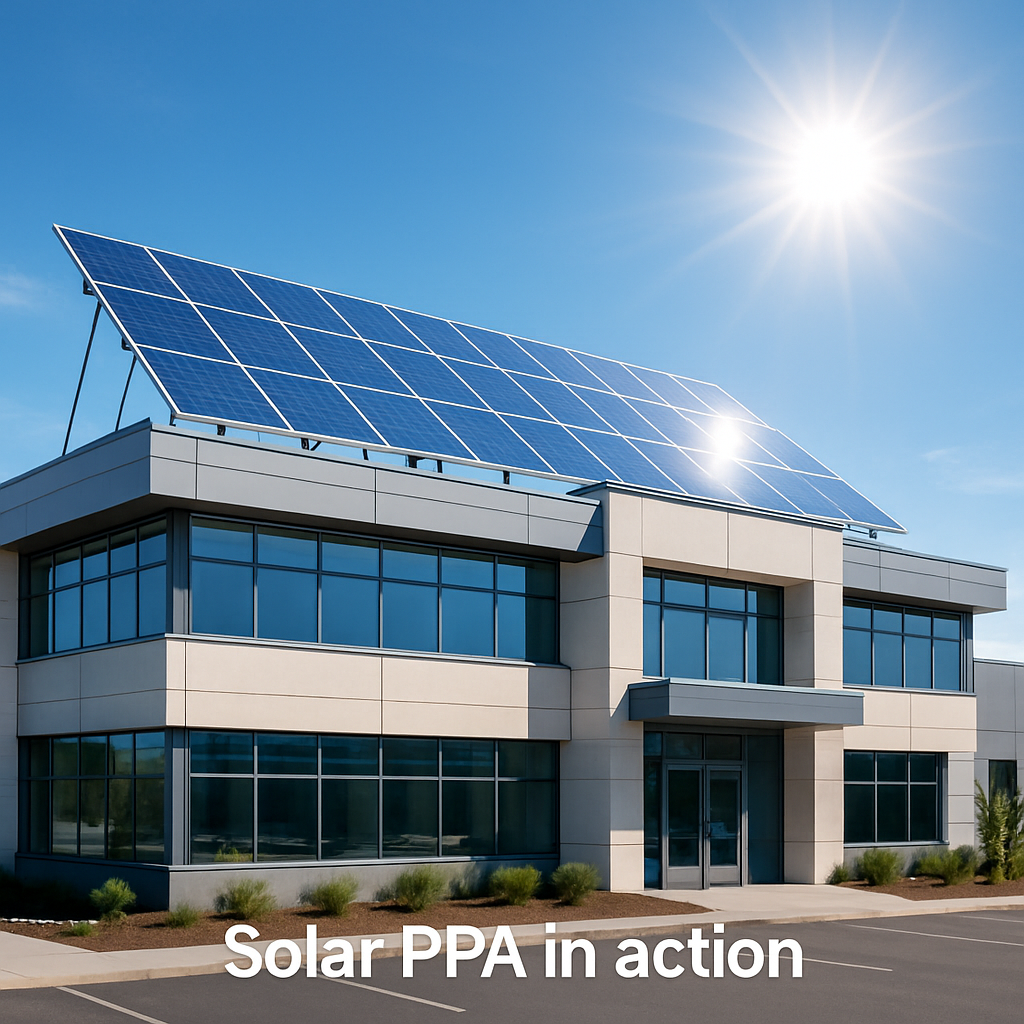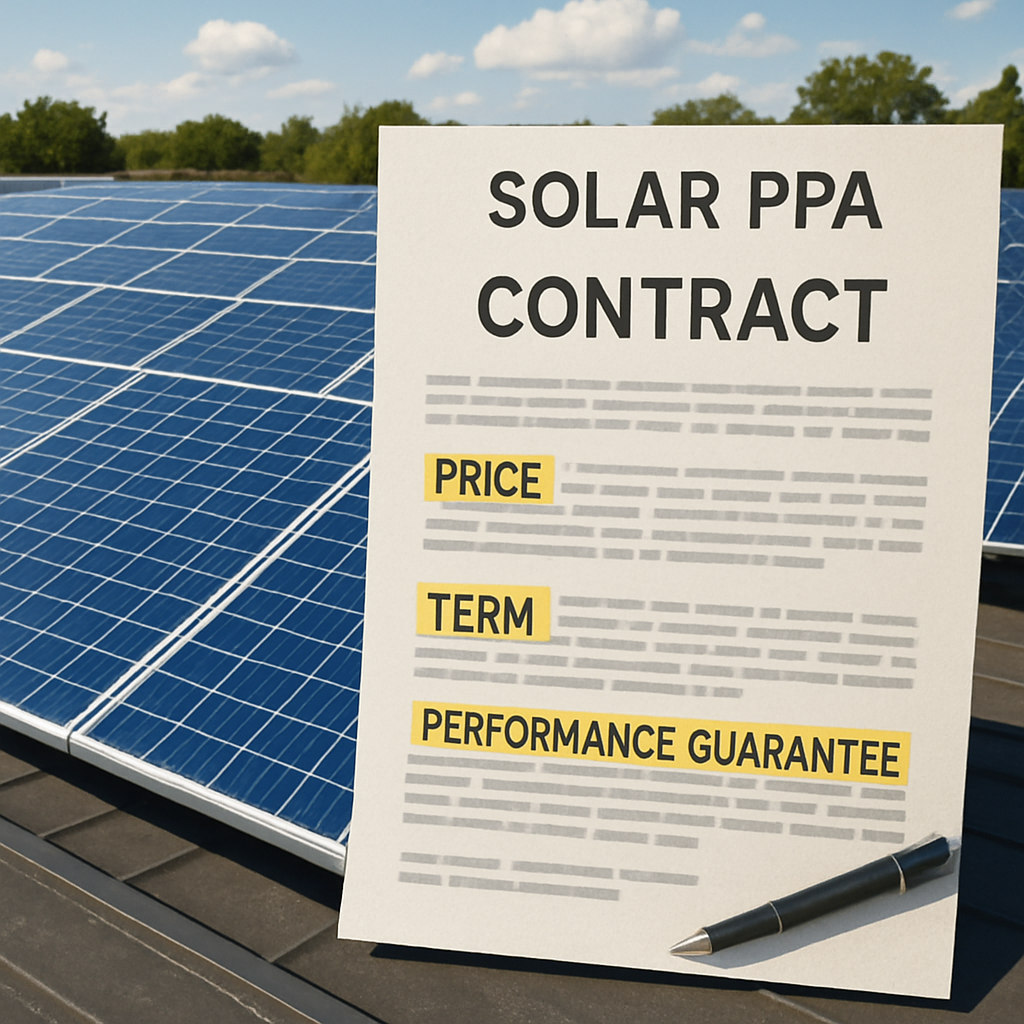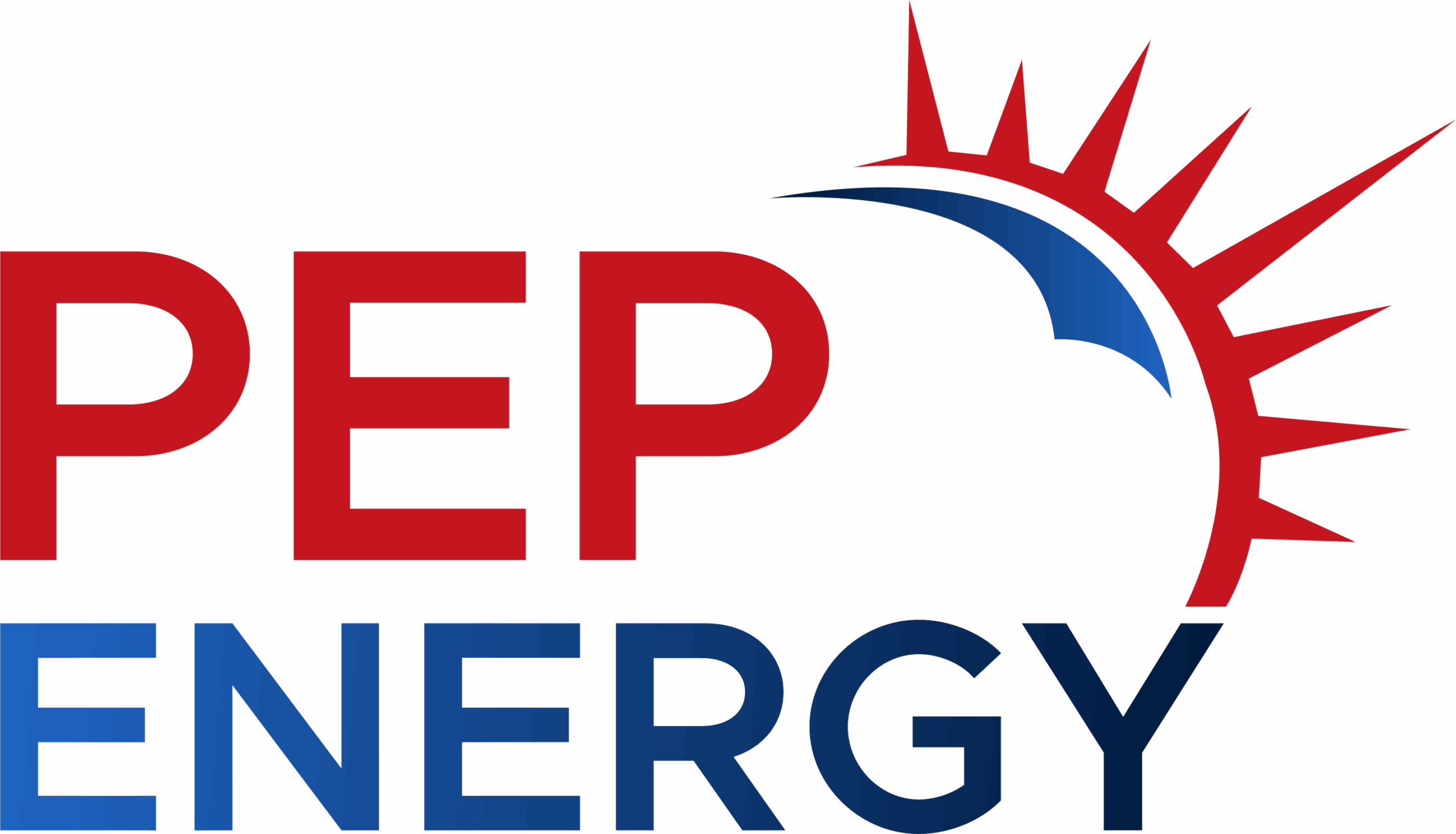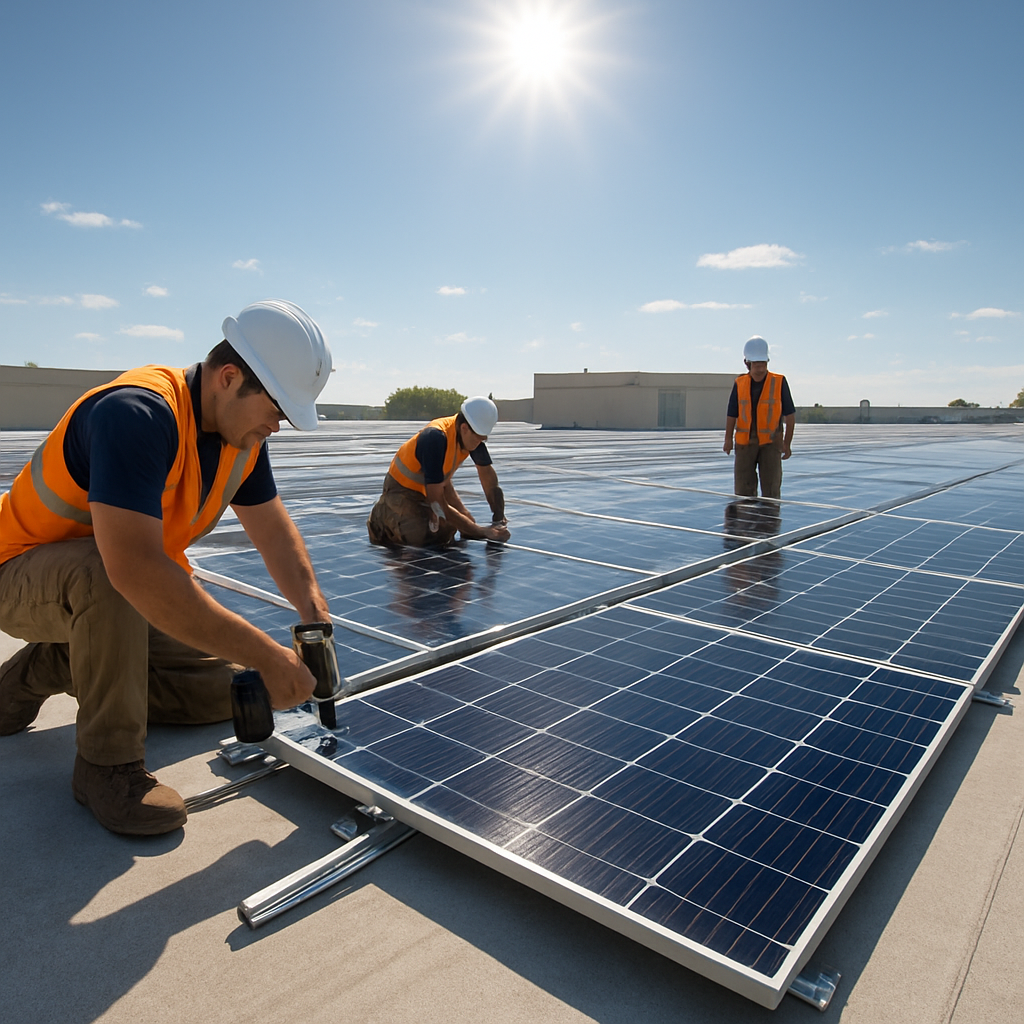Ever stared at your electric bill and thought, “There’s got to be a smarter way to get power without buying a whole solar array?”
That feeling is more common than you think, especially when solar panels look pricey but you still want clean energy. The answer often hides behind a three‑letter acronym: PPA.
So, what is a power purchase agreement solar? In plain English, it’s a contract where a third‑party developer builds and runs a solar system on your roof or property, and you agree to buy the electricity it produces at a set rate.
Imagine you’re renting a car. You don’t own the vehicle, you just pay for the miles you drive. A solar PPA works the same way—you pay for the kilowatt‑hours you use, while the developer handles installation, maintenance, and permits.
But why would anyone choose that over buying panels outright? First, there’s zero upfront cost. You don’t need to scrape together thousands of dollars, and you avoid the hassle of financing. Second, the rate is usually locked in for 10‑20 years, shielding you from utility price hikes.
Think about a local bakery that wants to showcase its commitment to sustainability. Instead of buying a system, they sign a PPA, get the rooftop covered with panels, and start paying a predictable, lower rate for their electricity. The bakery still owns the building, yet its carbon footprint drops dramatically.
And you’re not alone—business owners, schools, even homeowners are hopping on this model because it turns a big capital expense into a manageable operating cost.
Now, you might wonder, “What happens if the solar panels under‑perform?” Most PPAs include performance guarantees, and the developer is responsible for fixing any shortfall. That means you keep the benefit without the risk.
Ready to see if a solar PPA fits your situation? Let’s dive deeper into the mechanics, the pricing structures, and the questions you should ask before signing.
TL;DR
A solar power purchase agreement lets you enjoy clean electricity without buying panels, paying only for the kilowatt‑hours you use while the developer handles installation, maintenance, and permits.
It offers zero upfront cost, predictable rates for 10–20 years, and performance guarantees, so you can lower bills and carbon footprint without financial risk.
What Is a Solar Power Purchase Agreement (PPA)?
Alright, let’s peel back the curtain on the term you’ve probably heard tossed around at coffee chats and board meetings: a solar power purchase agreement, or PPA. In the simplest terms, it’s a contract where a third‑party developer builds, owns, and operates a solar system on your roof or land, and you agree to buy the electricity it produces at a pre‑negotiated rate.
Think of it like a subscription you pay for every kilowatt‑hour you sip, instead of buying the whole coffee machine outright. The developer handles the heavy lifting—permits, installation, maintenance—while you sit back and watch your utility bill shrink.
Who’s actually involved?
There are three main players: the offtaker (that’s you, the property owner), the developer (the solar company that designs and runs the system), and the utility (which may still be the entity that delivers the electricity to the grid). The contract spells out the term—usually 10 to 20 years—the price per kilowatt‑hour, and performance guarantees.
What’s comforting is the developer is on the hook if the panels under‑perform. Most PPAs include a “performance guarantee” that says, “If we don’t hit X % of expected output, we’ll make it right.” That shifts risk away from you.
How does the pricing work?
Instead of a lump‑sum purchase, you pay a per‑kWh rate that’s often lower than the utility’s retail price and locked in for the life of the agreement. Some PPAs use a fixed price, others tie the rate to market indexes, but the goal is predictability—no surprise spikes in your monthly bill.
Curious about the numbers? While exact rates vary by region, many off‑takers see savings of 10‑30 % compared to traditional electricity rates. And because the developer finances the system, there’s zero upfront cost for you.
What about ownership and tax benefits?
Since the developer retains ownership, you don’t get the federal Investment Tax Credit (ITC) directly. However, many developers pass a portion of that credit through the lower PPA price, so you still reap the financial benefit.
And if you’re a business, the PPA can count as a renewable energy procurement strategy—great for ESG reporting and meeting sustainability goals without draining capital.
Need a deeper dive? Check out What is a PPA? The Guide to Power Purchase Agreements for a step‑by‑step walkthrough of contract components.
So, does a PPA feel right for your situation? Ask yourself: Do you want clean power now without the hassle of owning hardware? Are you comfortable locking in a rate for a decade or more? If the answer is yes, a solar PPA could be your ticket.
Watching that quick video can help you visualize what a rooftop system looks like once it’s up and humming. It also shows how the meter reads the solar production versus the grid draw.
When you’re ready to compare options, it helps to look at resources beyond solar. For example, Referencement positionnement offers insights on optimizing your online presence—useful if you’re a small business planning to showcase your green credentials.
Another angle is thinking about overall employee benefits. A sustainable energy plan can be part of a broader perk package; How to Offer Health Insurance to Employees walks you through building comprehensive benefits, and a PPA can complement that narrative.
If you love data‑driven growth, you might explore platforms like Rebelgrowth for automated content and backlink strategies—perfect for telling your solar story and attracting like‑minded customers.
In a nutshell, a solar PPA is a low‑risk, low‑upfront‑cost way to lock in clean, cheap electricity while the developer handles everything technical. It’s a partnership that lets you focus on running your home or business, not on solar panels.
Ready to take the next step? Start by gathering a few quotes, compare the per‑kWh rates, and ask each developer about their performance guarantees. The right PPA can turn your roof into a revenue‑saving asset.

Key Components of a Solar PPA Contract
Now that you’ve seen how a solar PPA works in practice, let’s peel back the contract itself. The fine print is where you either lock in peace of mind or end up chasing hidden costs. Below we break down the pieces you really need to scan.
Who’s who in the agreement?
First off, who’s who? The “offtaker” – that’s you, the property owner – signs up to buy the power. The “seller” is the developer who designs, finances, installs and operates the panels. A third‑party investor often sits behind the scenes providing the equity that makes the deal bankable.
Term length and commercial operation
Next, the contract length. Most solar PPAs run between 10 and 20 years, kicking in on the Commercial Operation Date (COD) – the moment the system hits the grid and starts feeding electricity. That date triggers your first payment and usually aligns with a tranche of project financing.
Price mechanics
How you pay is a big deal. You’ll see a fixed‑price per kilowatt‑hour, or a base rate with an annual escalator of 1‑3 % to cover inflation and the system’s gradual efficiency loss. Some agreements even offer a “pay‑as‑produced” structure where you only pay for the actual output each month. Pexapark explains that PPAs can be signed for long‑term periods of 5‑20 years, which is why the term and price are tied together.
Performance guarantees
Performance guarantees are the safety net. The seller promises a certain production level – often expressed as a percentage of the “guaranteed output” at COD. If the panels fall short, the contract forces the developer to compensate you, either with cash or extra energy credits.
Maintenance and operations
Who handles the day‑to‑day? Maintenance, insurance, and any repairs are usually the seller’s responsibility. That means you won’t get surprise service bills; the developer must keep the array running at peak efficiency for the whole term, which also protects their own revenue stream.
Renewable Energy Certificates (RECs)
Renewable Energy Certificates often cause confusion. Some PPAs let you keep the RECs, boosting your green‑branding claims. Others sell the RECs to the developer for extra cash. Decide early which option aligns with your sustainability goals, because swapping them later can be costly.
Termination and buy‑out options
What if you need out early? Look for clear termination clauses and buy‑out options. A typical provision lets you purchase the system at a pre‑agreed price or walk away with a modest penalty. Knowing these numbers up front can save you from a nasty surprise if you sell the property.
Credit risk and bankability
Credit risk matters more than you think. Lenders want to see a “bankable” off‑taker and seller. A solid PPA reassures banks that the cash flow will be predictable, which in turn keeps financing costs low. That’s why you’ll often see references to the buyer’s credit rating in the contract.
After you watch the video, think about risk allocation. In a “pay‑as‑produced” deal, the buyer bears the volume risk – you pay for what you actually use, but you also absorb any dip in production. A baseload PPA flips that, guaranteeing a fixed volume and shifting the risk to the seller. Choose the structure that matches your appetite for uncertainty.
Another practical tip: line up the key clauses side by side – price per kWh, escalator rate, performance guarantee, REC ownership, termination terms, and credit provisions. When you compare them on a simple spreadsheet, the contract that feels like a partnership jumps out.

Bottom line: a solar PPA is only as good as the details you lock in. Grab a checklist, run the numbers, and ask tough questions. When everything lines up, you’ll have a contract that feels like a partnership, not a mystery.
Comparing Solar PPA Models: Fixed‑Rate vs. Escalating vs. Market‑Linked
When you start looking at a solar power purchase agreement, the first thing that trips you up is the pricing language. Is it a flat number you lock in forever? Does it creep up a little each year? Or does it dance with the wholesale market? That choice can feel like picking a roommate – you want someone predictable, but you also don’t want to pay for a luxury you never use.
Fixed‑Rate PPA: The “set‑and‑forget” friend
A fixed‑rate PPA gives you one price per kilowatt‑hour for the entire contract term. It’s the simplest model, and it works great if you crave bill stability. You know exactly what you’ll pay in year 1, year 5, even year 15 – no surprises. The downside? If wholesale electricity prices drop, you’re still stuck paying the higher contract price.
Escalating PPA: A modest annual nudge
Most developers sprinkle a small escalator into the agreement – think 1‑3 % a year. The idea is to keep pace with inflation and the inevitable efficiency loss of the panels as they age. It feels like a gentle reminder that costs change, but it’s still predictable enough for budgeting. If the market spikes, you’re still paying a little less than the spot price; if the market falls, you might end up paying a touch more than you could have.
Market‑Linked PPA: Riding the wholesale wave
Here the price you pay tracks a reference market index, like the regional wholesale price or a “capture price.” When the market is low, your bill drops – when it spikes, your cost rises. It’s a good fit if you’ve got a strong appetite for risk and want to benefit from falling prices. The flip side is volatility – your monthly bill can feel like a roller‑coaster.
So, which model feels right for you? Below is a quick side‑by‑side snapshot to help the decision‑making brain (and heart) line up.
| Feature | Fixed‑Rate | Escalating | Market‑Linked |
|---|---|---|---|
| Price predictability | Very high – same rate for 10‑20 years | High – known escalator schedule | Variable – follows market index |
| Risk exposure | Low – developer bears market risk | Moderate – you share some inflation risk | Higher – you share market price risk |
| Typical use case | Businesses that need budget certainty | Organizations okay with small annual increases | Buyers who want to capture low‑price periods |
One tip that often gets missed: look beyond the headline rate and check the “development maturity” of the project. LevelTen Energy notes that PPA prices have been climbing 30 % year‑over‑year in North America, driven by rising development costs and tighter supply according to LevelTen Energy. That means a brand‑new project with a solid permitting track record might command a slightly higher fixed price, but it also reduces the chance you’ll get hit with a delayed commercial operation date.
How to decide
1. Sketch out your cash‑flow tolerance. If a sudden $0.02/kWh swing would hurt your budget, steer toward fixed or modest escalators.
2. Check your market outlook. In regions where wholesale prices are expected to stay flat or dip, a market‑linked model can save you money.
3. Ask about performance guarantees. Even with a market‑linked price, a strong guarantee keeps the developer accountable for output.
Imagine a small bakery in Boise that chose a fixed‑rate PPA because the owner needed to predict monthly expenses for inventory ordering. A tech startup in Austin went with an escalating PPA, comfortable with a 2 % rise each year while expecting rapid growth in revenue to offset the increase. Meanwhile, a manufacturing plant in Chicago opted for a market‑linked deal, betting that the regional wholesale market would stay below the contract price for most of the decade.
Bottom line: there’s no one‑size‑fits‑all answer. Pull up a spreadsheet, line the three models up side by side, and ask yourself which risk feels manageable. The right choice will let you focus on what matters most – running your business or enjoying the sunshine on your roof – instead of staring at a confusing electricity bill.
How to Negotiate a Solar PPA: Step‑by‑Step Guide
Ready to sit down with a solar developer and make sure the deal works for you? Think of it like haggling at a farmer’s market—you want the freshest produce at a price you can live with, and you don’t want any surprise fees hidden in the bag.
1. Do Your Homework First
Grab the latest utility bill and pull the rate you’re currently paying per kilowatt‑hour. That number becomes your baseline. Then, sketch a simple cash‑flow model: plug in the proposed PPA price, any escalator, and estimate the system’s output based on your roof’s sun hours. If the numbers look worse than your utility bill, you’ve already got leverage.
And don’t forget to check local market trends. In some states, wholesale electricity has been flat for years; in others it’s climbing fast. Knowing the direction helps you decide whether a fixed, escalating, or market‑linked structure makes sense.
2. Clarify the Price Mechanics
Ask the developer to break down every component: the base per‑kWh rate, the annual escalator (if any), and any performance‑based adjustments. Write it down exactly as it appears in the draft contract.
Here’s a quick checklist:
- Base rate (cents/kWh)
- Escalator percentage and start year
- Minimum production guarantee
- Penalty or credit if the system under‑delivers
If anything feels fuzzy, request a side‑by‑side spreadsheet that shows your bill year‑by‑year under the PPA versus staying with the utility.
3. Nail Down Performance Guarantees
Performance guarantees are the safety net that keeps the developer honest. Ask for a guaranteed output level—usually expressed as a percentage of the “design output” at commercial operation.
Typical language says the seller will compensate you with cash or extra energy credits if the system falls short by more than, say, 5 % in any given year. Make sure the compensation method is spelled out, and that the trigger isn’t something you can’t control, like an unusually cloudy season.
4. Talk Maintenance, Insurance, and O&M Costs
Most PPAs include operations and maintenance (O&M) in the price, but you still want to know what’s covered. Does the developer handle panel cleaning after a dust storm? Who pays for inverter replacement after ten years?
Get a clear list of “in‑scope” items and a separate line for anything that would be “out‑of‑scope” and could become your responsibility later.
5. Get the Term and Exit Options on Paper
Contract length usually runs 10‑20 years. Ask how early termination works. Is there a buy‑out formula that lets you purchase the system at fair market value? Is there a modest termination fee if you sell the property?
Knowing these numbers upfront prevents a nasty surprise if your business expands, you move, or you simply want to own the panels after a decade.
6. Verify Creditworthiness and Bankability
Because the PPA is a long‑term cash‑flow tool, lenders will look at the developer’s credit rating. Request a copy of the developer’s financial statements or a third‑party credit assessment. If the developer is backed by a reputable investor, that risk drops dramatically.
And if the developer can point to other completed projects with similar terms, you have a proven track record to lean on during negotiations.
7. Run the Numbers One More Time
Before you sign, plug the final numbers into the spreadsheet you built in step 1. Compare the total cost over the full term to a “no‑PPA” scenario. If the PPA still saves you money—or at least gives you predictable budgeting—then you’re in a good spot.
Don’t forget to factor in the value of the Renewable Energy Certificates if you plan to keep them for branding or resale.
8. Put It All in Writing
Once you’ve negotiated each point, ask for a clean, revised contract that reflects every change. Look for a “schedule of amendments” that lists each negotiated clause. Sign only after you’ve reviewed the final PDF with your attorney or a trusted advisor.
And that’s it—your roadmap to a solar PPA that works for you.
Benefits and Risks of Solar PPAs for Businesses
So you’ve gotten past the “what is a power purchase agreement solar” basics and you’re actually looking at the ledger. The first thing most business owners ask themselves is, “Will this actually save me money?” The short answer is: usually, yes – but only if you keep an eye on the details.
Predictable, low‑upfront costs
One of the biggest draws is that you don’t have to cough up a six‑figure down payment. The developer foots the bill, you simply pay for the kilowatt‑hours you use. That means you can lock in a rate that’s often below the utility’s projected increase, giving you a budget you can actually trust.
Imagine you run a boutique coffee shop. Your monthly electric bill spikes every summer because the espresso machines run hot. With a solar PPA, you can negotiate a flat per‑kWh price that stays the same for 10‑15 years. Suddenly, you know exactly what that part of your overhead looks like, and you can plan inventory or staffing around it.
Performance guarantees keep the developer honest
Most PPAs come with a guarantee that the system will produce a certain amount of electricity each year. If the panels under‑perform, the developer either makes up the shortfall with cash credits or supplies extra power at the agreed‑upon rate. That safety net means you’re not left holding the bag when a cloudy season drags down output.
But here’s the catch: the guarantee is usually tied to “design output” – the amount the system should generate under ideal conditions. If the roof you’re using has unexpected shading or the inverter ages faster than expected, you could see a dip. That’s why you should ask for a “production shortfall clause” that spells out exactly how compensation works.
Tax and incentive benefits (and who gets them)
The developer typically claims the federal Investment Tax Credit (ITC) and any local rebates. From your perspective, that’s great because it keeps the overall cost down. However, if you want to own the RECs (the green certificates that prove you’re using renewable energy), you need to negotiate that up front. Keeping the RECs can boost your brand – think of a tech startup touting “100% renewable power” on its website – but it may also mean a slightly higher per‑kWh price.
Long‑term commitment and flexibility
PPAs usually run 10‑20 years. That’s a long stretch, and businesses evolve. You might outgrow the space, sell the property, or decide you want to buy the system outright later. Look for a clear “buy‑out” option that lets you purchase the panels at fair market value, or an early‑termination clause with a reasonable fee. Without those, you could be stuck paying for a contract that no longer makes sense for your operations.
Risk of escalators and market shifts
Even though the rate is locked, many PPAs include a modest annual escalator – 1‑3% is common. It’s meant to cover inflation and the gradual efficiency loss of the panels. If your local utility rates stay flat, that escalator can feel like an unwanted surprise. Conversely, if wholesale electricity prices plunge, you might end up paying a premium compared to the market‑linked pricing some developers offer.
One way to mitigate this is to model three scenarios: a flat‑rate PPA, an escalating PPA, and a “no‑PPA” utility‑only baseline. If the escalating PPA still beats the utility cost in all three scenarios, you’ve got a buffer.
Credit risk and developer stability
Because the PPA is a cash‑flow tool, lenders will glance at the developer’s credit rating. A well‑capitalized developer backed by a reputable investor reduces the chance you’ll see a project stall or the developer go bankrupt. Ask for third‑party credit assessments or a list of completed projects similar in size and scope. Those references are your insurance policy.
Maintenance, insurance, and O&M responsibilities
One of the perks is that the developer handles day‑to‑day upkeep – cleaning, inverter swaps, warranty claims. That frees you from unexpected repair invoices. Still, you should confirm what “maintenance” actually covers. Does it include panel cleaning after a dust storm? What about replacement of a faulty inverter after ten years? A clear “in‑scope” list prevents surprise line‑item charges down the road.
Bottom line: the benefits of a solar PPA for a business are compelling – zero upfront cost, predictable pricing, performance guarantees, and off‑loading of O&M. The risks are real, too – escalators, long‑term lock‑in, credit exposure, and the need to negotiate REC ownership and buy‑out terms. The sweet spot is a developer with a solid credit rating, a transparent contract, and a price structure that aligns with your cash‑flow tolerance. Walk away with a spreadsheet that shows you’re still ahead, and you’ll have turned a complex financing model into a clear, actionable advantage for your business.
Common Pitfalls to Avoid in Solar PPAs
Over‑complicating the contract
It’s tempting to load the agreement with every possible scenario you can imagine.
But the more clauses you add, the harder it is for anyone to actually read and understand what they’re signing.
Do you really need a hundred footnotes about every conceivable weather pattern?
Relying on savings forecasts
Many proposals promise big‑letter savings, yet those numbers often hide assumptions about utility rates that you can’t control.
Focusing on projected dollars saved rather than the agreed‑upon $/kWh rate can tempt vendors to inflate the forecast.
As Solar Empowered Schools outlines how focusing on savings forecasts can mislead bidders, you end up comparing apples and oranges.
Unclear escalator terms
Escalators are the silent cost drivers in a PPA.
If the contract says “annual increase” without specifying the percentage or whether it’s capped, you could see your rate creep up faster than inflation.
The same guide warns about unclear escalator terms, urging you to lock in a fixed rate or a clearly defined percentage.
Skipping credit and developer checks
A solar PPA lives or dies with the developer’s financial health.
Never assume a glossy brochure equals creditworthiness – request third‑party credit assessments and a track record of completed projects.
When the developer stumbles, you’re stuck with a broken contract and an unfinished roof.
Forgetting buyout options
Most PPAs let you purchase the system after a few years, but only if you ask for it up front.
Without a buyout clause, you lose the flexibility to own the asset once you’ve proven its value.
Ask for a Year 7 and Year 20 buyout option – it’s a cheap way to keep future choices open.
Neglecting O&M details
Who actually cleans the panels after a dust storm? Who replaces an inverter that fails after five years?
If the agreement leaves maintenance vague, you might end up paying surprise repair bills.
Spell out “in‑scope” vs. “out‑of‑scope” items, and set a clear response time for any service call.
Ignoring performance guarantees
Performance guarantees protect you if the system under‑produces.
Make sure the guarantee is tied to a realistic design output, not an ideal sun‑up‑hour number that never happens in your location.
Without it, you could be stuck paying for electricity you never actually receive.
Leaving the negotiation to the last minute
Rushing the final review is a recipe for hidden fees.
Take a checklist: term length, escalator rate, performance guarantee, O&M scope, buyout clause, credit rating.
Run the numbers side‑by‑side with a no‑PPA baseline before you sign.
That way you know you’re not just swapping one bill for another – you’re actually getting predictable, lower‑cost power.
Conclusion
If you’ve made it this far, you probably feel a lot more comfortable answering “what is a power purchase agreement solar” and how it could fit your roof or business.
Remember the three things that matter most: lock in a clear per‑kWh price (or a modest escalator), get a solid performance guarantee, and make sure the buy‑out or termination clause gives you an out if your needs change.
It’s easy to get lost in legalese, but think of a PPA like a friendly lease on sunshine – you pay only for the light you actually use, and someone else keeps the panels humming.
So, what’s the next step? Grab a simple spreadsheet, plug in your current utility rate, and compare it to the numbers the developer gave you. If the PPA still looks cheaper after you add a few “what‑if” scenarios, you’ve got a win.
And don’t forget to ask for a copy of the performance guarantee and the buy‑out formula before you sign. A clear, written clause is worth its weight in gold when the contract ages.
At the end of the day, a solar PPA should feel like a partnership, not a mystery. If you’re ready to explore options for your home or commercial site, reach out to a trusted solar specialist who can walk you through the details and help you lock in the best deal.
FAQ
What is a power purchase agreement solar and how does it work?
A solar PPA is a contract where a third‑party developer installs, owns, and operates a photovoltaic system on your roof or land. You, the off‑taker, agree to buy the electricity it produces at a pre‑negotiated price per kilowatt‑hour. The developer handles maintenance and financing, while you pay only for the power you use, usually on a monthly bill that mirrors your utility statement.
Who pays for installation and maintenance in a solar PPA?
All upfront capital costs – equipment, permits, installation, and interconnection – are covered by the developer. That same developer is also responsible for operations and maintenance (O&M) throughout the contract term. You won’t see separate line items for inverter replacement or panel cleaning; those expenses are baked into the per‑kWh rate you pay, giving you predictable monthly costs.
Can I lock in a fixed rate or are escalators mandatory?
Most PPAs offer a choice: a true fixed‑rate where the price per kWh never changes, or an escalating rate that adds a small percentage (often 1‑3%) each year to account for inflation and panel degradation. If you prefer budget certainty, ask for a fixed‑rate clause. If you’re comfortable with a modest increase, an escalator can sometimes lower the initial rate.
What happens if my property is sold before the PPA ends?
Good contracts include a transfer or buy‑out provision. When you sell, the new owner can step into the PPA under the same terms, or you can exercise a buy‑out option that lets you purchase the system at a pre‑agreed fair‑market value. Make sure the clause spells out any fees or notice periods so the sale doesn’t get tangled in legal jargon.
How do Renewable Energy Certificates (RECs) affect my PPA?
RECs represent the environmental benefit of the electricity generated. Some PPAs let you retain the RECs, which you can claim for sustainability reporting or even sell for extra revenue. Others have the developer sell the RECs to offset the lower per‑kWh price they charge you. Clarify ownership early so you know whether you’ll get the green branding boost or a slightly higher rate.
Is a solar PPA right for residential homeowners versus businesses?
For homeowners, a PPA can eliminate upfront costs and simplify maintenance, making solar accessible without a loan. However, the contract length (often 15‑20 years) should align with how long you plan to stay in the house. Businesses usually benefit from the predictability of a fixed‑rate PPA for budgeting, and they can often negotiate larger systems that deliver bigger savings per kilowatt‑hour.
What red flags should I watch for when reviewing a solar PPA contract?
Watch out for vague escalator language, missing performance guarantees, or unclear O&M scope. If the contract doesn’t specify who owns the RECs, you might miss out on sustainability credits. Also, ensure there’s a clear buy‑out or termination clause—without it you could be stuck paying for a deal that no longer fits your needs. Finally, verify the developer’s credit rating or ask for third‑party financial assurances.





